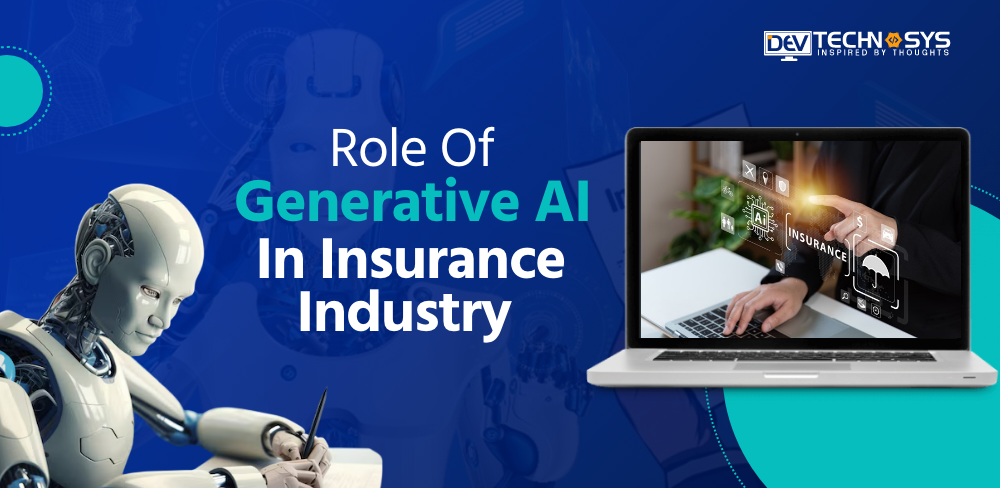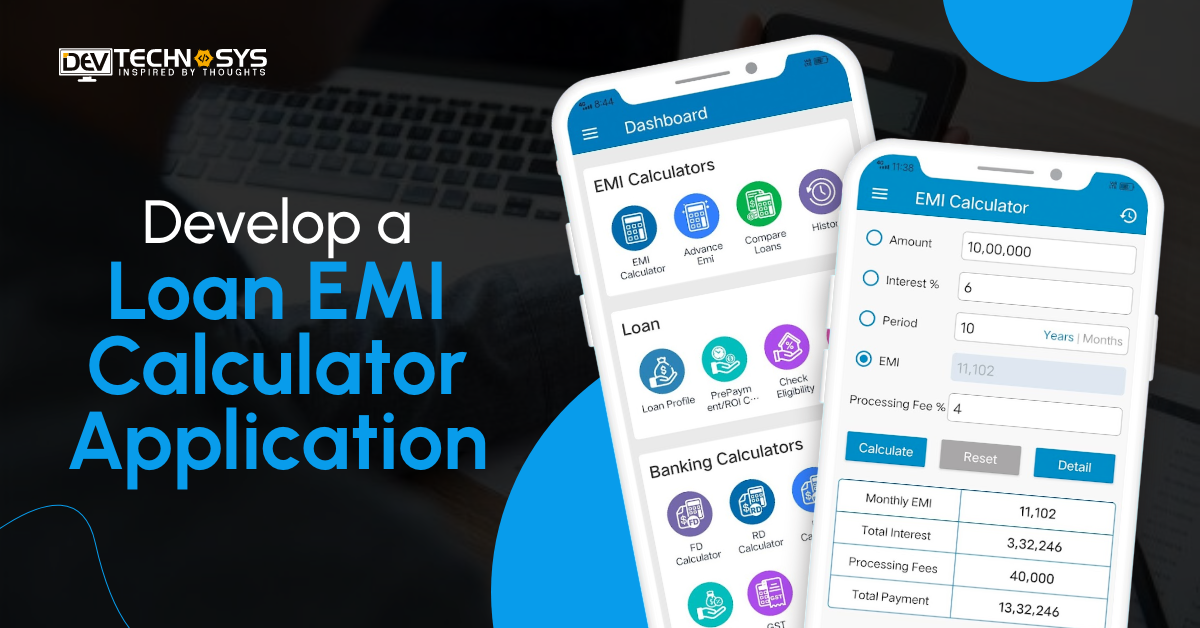“Generative AI is not just about creating things; it’s about inspiring human creativity by augmenting our own capabilities.” – Sundar Pichai.
Have you ever imagined an insurance industry that can quickly create custom paperwork, adjust policies to meet specific needs, and anticipate risks with incredible predictability? This is the future of Generative AI in insurance and not science fiction.
In insurance, generative AI is changing how we think about and handle risk in a big way. Everything from customer service and product development to underwriting and claims processing is changing as a result of this robust innovation. By using Generative AI, the insurance sector may grow more efficient, productive, and focused on their customers.
Read this blog to get an insight on the areas like benefits, generative AI use cases in insurance, top trends, challenges and opportunities it presents, and what the future holds for Generative AI in insurance.
So, let’s begin.
Table of Contents
What is Generative AI In Insurance?
Generative AI in insurance is when generative models, a type of AI, are used in different parts of the insurance industry. In generative AI, algorithms are used to make new data that looks like a training model.
Additionally, it enables businesses to utilize advanced modeling techniques. This method streamlines processes, and makes the insurance industry more efficient and profitable in the long run.
By using Generative AI, insurers can improve the accuracy of risk assessments and find the best price strategies that are designed to meet the needs of a wide range of users. So, you can build an insurance software management system by using generative AI technology to level up your insurance business.
Market Stats of Generative AI In Insurance
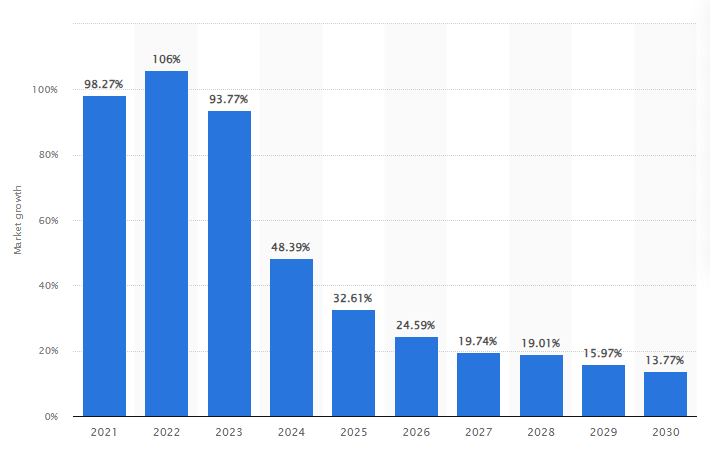
Source: Statista
- In 2023, the worldwide generative AI in insurance industry was worth $346.3 million. By 2032, it was projected to be worth $5,543.1 million, having grown at a CAGR of 32.9%.
- Insurance firms spent more than three billion yuan on AI in 2020.
- The Generative AI sector is forecasted to grow to $66.62bn by 2024.
- The market is projected to grow at a rate of 20.80% per year from 2024 to 2030, reaching a value of $207.00bn by 2030.
- The insurance business around the world spent $76 million on software for cognitive/AI technologies in 2016. By 2021, that amount will increase to $571 million.
- The cloud group is projected to have the largest share of the industry in the coming years, based on adoption.
- When it came to technology, the machine learning segment had the biggest part of the market in 2022.
- The natural language processing sector is likely to broaden fastly in the next few years.
- According to the type of use, scam identification and credit analysis had the biggest part of the market in 2022.
What Are The Benefits of Generative AI In Insurance Industry?
Generative AI can bring several benefits to the insurance sector by enhancing multiple elements of operations, user support, risk management, and fraud detection. As per the Generative AI development services provider, here are some benefits of how generative AI can add value to the insurance industry:
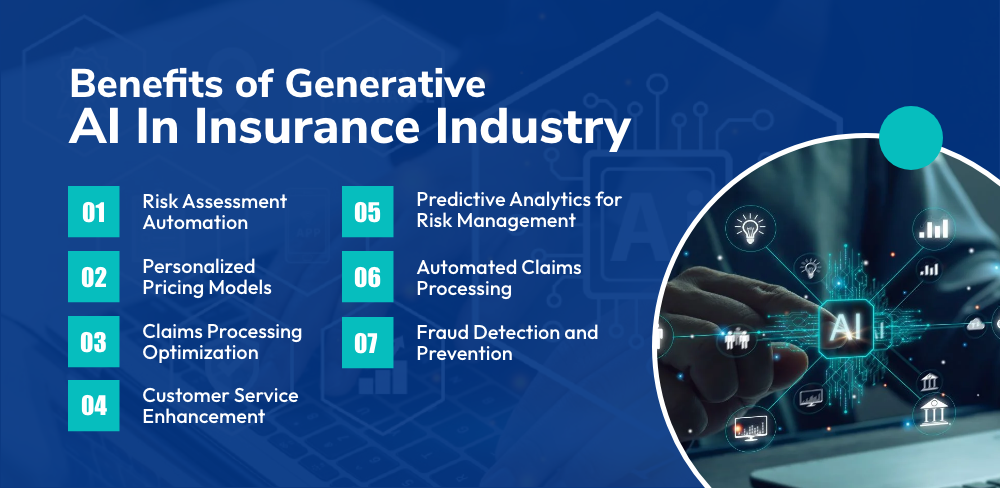
● Risk Assessment Automation
Generative AI algorithms can analyze vast amounts of data to assess risks associated with insurance policies while availing AI development services in creating more accurate risk models.
This enhances AI underwriting insurance processes and helps companies better determine premiums. Risk assessment automation can minimize these algorithms into insurance mobile apps for streamlined policy applications and approvals.
● Personalized Pricing Models
By utilizing generative AI, insurance firms can develop customized pricing models based on individual behavior, and other relevant data points. This facilitates the creation of tailored insurance packages for customers, improving customer satisfaction and retention.
Generative AI in insurance can assist these models and IoT app development can be integrated to data from connected devices for more accurate pricing.
● Claims Processing Optimization
Generative AI streamlines claims processing by automating tasks such as document classification, damage assessment, and fraud detection. Insurance companies can leverage generative AI to build claim processing systems integrated with generative AI algorithms.
Mobile apps development services providers can create user-friendly claim submission apps with the integration of IoT sensors for real-time data collection in case of claims.
● Customer Service Enhancement
Chatbots driven by generative AI may offer policyholders quick support by solving their queries, suggesting them in buying coverage, and even helping them file claims.
An insurance app development services provider can design and implement these chatbots and integrate them into insurance mobile apps for seamless customer interactions.
● Fraud Detection and Prevention
In order to spot fishy conduct and possible deceit, generative artificial intelligence systems may look for trends in data. It helps insurance companies mitigate risks and losses. With Generative AI, you can create fraud detection systems powered by these algorithms.
However, an Artificial Intelligence development company can also help in integrating fraud alerts and prevention features into insurance mobile apps.
● Predictive Analytics for Risk Management
Generative AI for insurance enables insurance companies to predict future trends and risks by exploring old records and other factors. A predictive analytics services provider can build AI models for risk management and integrate these insights into insurance apps to offer proactive risk mitigation advice to customers.
● Automated Claims Processing
One of the best qualities about generative AI for the insurance business is that it can handle cases automatically. By leveraging natural language processing algorithms, insurance companies can analyze claim documents, extract relevant information, and process claims more efficiently. It minimizes the time necessary for claims processing which leads to faster payouts and better user satisfaction.
Major Challenges of Leveraging Generative AI in Insurance
Now that you have become well-versed with the benefits of generative AI in insurance. Let’s now get to know the major challenges of using generative AI in insurance industry.

● Data Privacy and Security Concerns
It is crucial to ensure strong confidentiality and safety of data processes since insurers handle a huge amount of confidential data, including personal and fiscal data. Generative AI algorithms require access to extensive datasets, raising concerns about data breaches and regulatory compliance.
With the assistance of a fintech app development company, users can easily secure data handling and mitigate these risks with the help of mobile apps. Along with utilizing AI features, this makes sure that strict data security laws are observed.
● Regulatory Compliance and Legal Frameworks
It’s quite tough to monitor all the rules and laws that affect the insurance industry. Integrating generative AI necessitates compliance with existing regulations, such as GDPR and HIPAA, while navigating evolving laws governing AI technologies.
Working closely with legal advisors can help insurers navigate these challenges, ensuring that AI implementations align with legal standards and industry regulations.
● Customization and Personalization
Customizing policies to suit different requirements is at the heart of insurance. Generative AI offers the potential to personalize offerings further, yet achieving this level of customization at scale remains a challenge.
By partnering with a mobile banking app development company proficient in creating user-centric solutions, insurers can enhance their algorithms to analyze vast datasets efficiently, facilitating personalized insurance recommendations through intuitive interfaces.
● Risk Assessment and Fraud Detection
Effective risk evaluation and fraud detection are fundamental to the insurance industry’s viability. Generative AI can aid in analyzing patterns and predicting potential risks, but the accuracy of these assessments depends on the quality and diversity of the data utilized.
The generative AI in insurance can provide access to enriched data sources, enhancing the AI algorithms’ ability to identify fraudulent activities and assess risks accurately.
● Interpretability and Transparency
Although generative AI models work, it can be hard to figure out why they make the choices they do. In the insurance sector, where transparency is essential for building trust with customers, this opacity presents a significant hurdle.
However, integrating interpretability features into AI models, with insights from an insurance app development company, can enhance transparency, enabling insurers to explain decisions and recommendations to customers effectively.
● Ethical and Bias Concerns
AI algorithms can be driven by biases in the files they undergo training on, which could lead to unfair treatment of certain groups or people. In the insurance industry, where fairness and equity are crucial, addressing these biases is imperative.
Additionally, you can collaborate with a mobile banking app development company that can help identify and mitigate biases. It ensures that AI-driven decisions uphold ethical standards and treat all customers equitably.
Real-world Use Cases of Generative AI In Insurance
In this section, we will discover the real world use cases of leveraging Generative AI in Insurance industry. So, let’s check out:
● Data Augmentation
With generative AI in life insurance, users can look at existing customer data and make new data from it. It helps a lot when users lack sufficient particular forms of information for modeling projects.
These can be used to make prediction models work better. Also, these created fake datasets can copy the features of original data without having any personally identifiable information in them. This helps protect customer privacy.
● Underwriting
By analyzing vast amounts of data like historical claims, customer information, and external factors, generative artificial intelligence can provide underwriters with assistance in evaluating potential risks.
This is accomplished by generating risk profiles and recommending appropriate coverage levels, which in turn enables underwriters to make more informed decisions in a more expedient manner.
● Claims Processing And Fraud Detection
Automating the evaluation of claims papers is one way that generative AI might help simplify the claims process. It has the capability to extract pertinent information from documents, and detect discrepancies claims based on patterns and anomalies in the data.
● Quote and Policy Generation
Machine learning may be used to automate the process of generating insurance quotations, policies, and the paperwork that goes along with them. You can create an AI app for insurers which can help in making templates and information about the client. It can generate quotations, policy papers, invoices, and certifications which will decrease the amount of admin work that has to be done manually.
● Customer Support And Engagement
The effort of human agents is reduced by chatbots driven by artificial intelligence, which also provide customer service around the clock and give instant responses to queries on policies, coverage, and claims. When it comes to enhancing customer engagement and retention, generative AI-powered best Life Insurance apps may also automate tailored contact with policyholders.
This can be accomplished by sending reminders for premium payments. It offers policy changes, and delivers information that is essential to the policyholder’s needs.
● Customer Upsell/Cross-sell Opportunities
It is possible for generative AI to assess consumer data and preferences in order to provide recommendations for customized insurance policies. When insurers have a thorough grasp of their customers’ risk profiles and requirements, they are able to provide individualized coverage alternatives, which in turn increases the possibility of upselling or cross-selling more solutions.
Top Generative AI Trends In Insurance
Generative AI is changing the insurance industry in multiple ways. Let’s check the essential trends in detail:
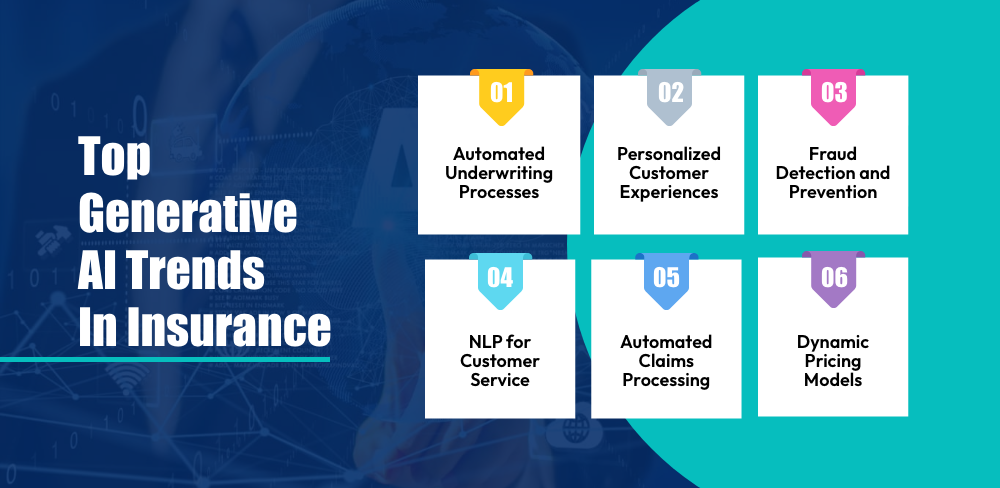
● Automated Underwriting Processes
Generative AI models can streamline underwriting processes by analyzing vast amounts of data to manage risk and know premiums. These generative AI models can develop an automated underwriting system with synthetic data to augment training sets which improve the accuracy of insurance underwriting AI decisions.
● Personalized Customer Experiences
More and more, insurers are using generative AI to make situations better for clients. This involves developing customized insurance goods, policy ideas, and advertisements based on what everybody likes and how they act.
● Fraud Detection and Prevention
Generative AI insurance may scan for structures and gaps in records to find errors in insurance claims. By generating synthetic data to simulate various fraud scenarios, these models can improve the accuracy of fraud detection algorithms and enhance overall security measures.
● NLP for Customer Service
More and more insurance companies are using chatbots and virtual assistants that are driven by NLP to help and guide customers right away. Generative AI techniques enable these systems to understand and generate human-like responses, enhancing the quality of customer interactions and reducing the workload on human agents.
● Automated Claims Processing
Generative AI in insurance can speed up the claims editing method through handling jobs like sorting documents, validating claims, and figuring out settlements.
By generating synthetic data to train machine learning algorithms, insurers can develop more efficient and accurate claims processing systems, reducing processing times and improving customer satisfaction.
● Dynamic Pricing Models
Insurers can utilize generative AI in insurance to develop dynamic pricing models that adjust premiums in real-time based on changing risk factors and market conditions. By generating synthetic data to simulate various pricing scenarios, these models can optimize pricing strategies and enhance profitability while ensuring fairness and transparency for policyholders.
Future of Generative AI In Insurance!!
Even though the insurance business is still changing, generative AI has already shown that it can change many processes by blending in with them naturally.
Generative AI has had a big impact on the business world, from figuring out risks and scams to improving customer service and making new products. But the future of AI development looks even more changeable and radical, bringing about new improvements and chances.
● Autonomous Claims Processing
There will be a big change toward self-service claims handling in the future of Generative AI in insurance. When advanced computer vision and natural language processing are combined, AI-powered systems will be able to quickly process and verify claims without any help from a person. Customers will get faster and more accurate payouts, which will save them time and effort when making and handling claims.
● Integration of IoT and Generative AI
The Internet of Things and Generative AI and insurance will work together to make a smooth environment of gadgets and data that are all linked together. Smart devices like connected cars, wearable tech, and home sensors will give insurers data that they can use to correctly measure risks, make plans based on real-time data, and stop losses by giving customers personalized safety advice.
● Explainable AI for Transparency
As more insurance companies use generative AI in health insurance, more people will want Explainable AI. XAI methods will be very important for making sure that choices made by AI are clear, follow the rules, and can be trusted.
Insurance companies will have to explain to customers how AI systems make certain suggestions or choices. This will help customers understand and help companies follow the rules.
Conclusion
No one can deny that Generative AI has the potential to completely change the insurance business. Implementing Generative AI in insurance correctly can have big advantages for both insurers and customers.
Gen AI-powered solutions make the insurance industry run better and make users happier by doing things like custom advertisements, and artificial intelligence insurance claims interpreting.
However, to make the most of it, it is essential to work with a Generative AI development company to create custom solutions that meet specific insurance app requirements.
Frequently Asked Question!
1. How Does Generative AI Apply to the Insurance Industry?
Generative AI may produce artificial info for model training, automate filing of documents. It also enhances client service using virtual agents in the insurance business.
2. How Much Does It Cost To Build an Artificial Intelligence Project?
The cost to build Artificial Intelligence project can typically be between $10000-$30000. Depending on the project intricacy and requirements, the generative AI app development cost may fluctuate.
3. What is the Future Outlook for Generative AI in the Insurance Industry?
For Generative AI to keep evolving in the insurance sector, new ideas will be required in many areas. For instance, handling claims, coverage, client service, and managing risk.
4. Are Insurance Coverage Clients Prepared for Generative AI?
Generative AI is typically liked by clients; 47% of people in the UK and 55% of people in the US say they like it. Also, 44% of clients feel fine utilizing insurance chatbots to file claims, and 43% would rather use them to apply for coverage.

